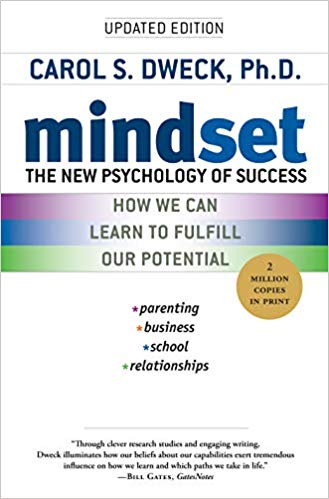

This article is an excerpt from the Shortform summary of "Mindset" by Carol Dweck. Shortform has the world's best summaries of books you should be reading.
Like this article? Sign up for a free trial here .
What are the characteristics of a good leader? What are the qualities of a great leader?
We’ll cover the most essential characteristics of a good leader and discuss how they’re all tied to having a growth mindset. From Jim Collins’s Good to Great and Carol Dweck’s Mindset.
The Characteristics of a Good Leader
In Good to Great, author Jim Collins examined what separated good companies from the best. He studied eleven companies over five years, whose stock had soared and who had stayed at the top of their industries for at least fifteen years. Each was compared with an average company in the same industry.
A key factor for success was that the leaders of great companies led with a growth mindset. They shared the characteristics of a good leader. The best leadership qualities include:
- Being humble
- Asking questions
- Confronting failures while confident of success
- Downplaying hierarchy
- Constantly trying to improve
- Surrounding themselves with competent people
- Sharing the credit
- Rejecting power games
- Thinking of the company’s future
These are some of the best leadership qualities. Alan Wurtzel, CEO of Circuit City, was an example of a growth-minded leader who demonstrated the traits of a good leader. He held debates in his boardroom. Rather than trying to impress his board members, he used them to learn. He constantly questioned everything in order to understand where the company needed to go. He considered himself a workhorse rather than a star. He was able to turn around a company that had been near bankruptcy.
In contrast to the fear and denial permeating companies with fixed-mindset leaders, the atmosphere in a company with a growth-oriented leader is positive and energized. This is another quality of a great leader.
Growth-minded leaders believe in their own and others’ ability to learn and develop. Instead of using their company as a tool for self-promotion, they focus on growing the company and employees. These are further characteristics of a good leader.
Here’s a look at three leaders who transformed their companies with a growth mindset and demonstrate the traits of a good leader.
Characteristics of a Good Leader: Jack Welch of GE
Jack Welch took over as CEO of General Electric in 1980, and in twenty years its value increased from $14 billion to $490 billion. He was one of the most admired CEOs of the era, but unlike many superstars, he was self-effacing and made a point of listening and nurturing.
He often visited factories and assembly lines to listen to front-line employees. He emphasized teamwork. In his autobiography, he noted that he disliked using “I” when speaking because most of what he’d done in his life had been accomplished in working with others. He felt others made him look better and made the work enjoyable. This is an attribute of a good leader
At several earlier points in his career, Welch had been arrogant or overly confident, which led to mistakes that he learned from. As a young engineer at GE, he caused a chemical explosion that blew off the roof. He expected a reprimand and punishment, but instead received support and understanding. This made him realize the importance of helping good employees overcome failures.
While in the running with several other candidates for CEO, he emphasized his ability to grow. When he got the job, he set up channels for feedback, asked questions about what needed changing, and discouraged elitism. He hired for mindset rather than talent and preached the importance of growth, mentoring, and teamwork over individual accomplishment. This is one of the key characteristics of a great leader.
Characteristics of a Good Leader: Lou Gerstner of IBM
After turning down the job several times, Lou Gerstner took over IBM in 1993 at the request of the board of directors, who realized the company was in trouble. To create a culture that fostered growth, he created communication channels, visited company operations and met with employees, de-emphasized hierarchy, and sought everyone’s input, including outside expertise. These are traits of a good leader.
To boost teamwork, he eliminated people who played politics, bad-mouthed others, or self-aggrandized. Instead, he rewarded people who helped others. One problem in the company was that deals were begun but not followed through, so he focused on execution. He also focused on customers’ needs by cutting prices and integrating systems.
His long-term focus didn’t impress Wall Street, though, and stock prices remained static. He persisted and by 2002, stock value had increased by 800 percent and IBM was the industry leader in hardware, enterprise software, and custom computer chips.
Characteristics of a Good Leader: Anne Mulcahy of Xerox
In 2002, when Anne Mulcahy took over as CEO, Xerox had $17 billion in debt, a terrible credit rating, and abysmal stock prices. The company was struggling to sell its copy machines and hadn’t diversified. Within three years, Mulcahy turned the company around.
She started in a personal growth mindset with the goal of learning every part of the business. For instance, she pored over the finances to understand how each decision would affect the bottom line. She found ways to get answers when executives couldn’t tell her where things stood, and she told employees the truth—that the company wasn’t viable. She cut payroll 30 percent, but took to heart the impact on employees and worried even more about the potentially greater impact the company’s failure would have on employees and retirees.
She focused on morale and employee development and rewarded people who went above and beyond for the good of the company. With short-term changes, the environment grew more positive. But these changes also positioned the company for success in the long run. Mulcahy demonstrates the qualities of a great leader.
———End of Preview———

Like what you just read? Read the rest of the world's best summary of "Mindset" at Shortform . Learn the book's critical concepts in 20 minutes or less .
Here's what you'll find in our full Mindset summary :
- The difference between a growth and a fixed mindset
- How a fixed mindset keeps you back throughout your life: education, relationships, and career
- The 7 key ways to build a growth mindset for yourself






